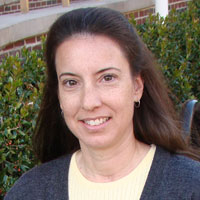Study finds gender and age differences in Americans who make use of city parks
April 9, 2019
While Americans struggle to meet national guidelines for physical activity, new research shows that neighborhood parks continue to be underused by certain demographics, highlighting an untapped potential for the role of parks in contributing to the health of U.S. citizens.

Dr. Kelly Evenson
Kelly Evenson, PhD, professor in the Department of Epidemiology at the UNC Gillings School of Global Public Health, is lead author of the paper, “United States’ neighborhood park use and physical activity over two years: The National Study of Neighborhood Parks,” published online March 27 in Preventive Medicine.
It is the first observational study of national city park visitors, using an approach that offers a more complete understanding of how Americans use their neighborhood parks. The study was conducted in collaboration with the RAND Corporation and was supported by the National Heart, Lung and Blood Institute of the National Institutes of Health.
Observing a national sample of 168 city parks at two points in time (April to August 2014 and April to July 2016), the team visited parks and used a research tool to describe park conditions and accessibility, how individuals use parks, the areas where they spend the most time within the parks, and how active individuals from different age groups are when using the parks. As the sample included parks of two to 23 acres in size from 25 U.S. cities with a population of least 100,000, the results cannot be generalized to represent physical activity at parks in smaller cities or rural areas.
In both time periods, the most commonly observed activity was sitting, and almost two-thirds of park users at both time periods were observed being sedentary. Also significant were the differences in who uses parks, said Evenson.
“We found persistent differences in park use by gender and age, with disproportionately more male than female users from every age group, such as child, teenager, adult or older adult, using parks,” said Evenson. “Older adults used the park less than all other age groups.”
The most commonly used sports facilities in parks were baseball fields and general multipurpose fields, while users not engaging in sports facilities were often found to be on lawns, sidewalks, playgrounds and bleachers. The lack of increase in city park use over two years, during a time when increased physical activity was widely promoted as a marker of overall health, was a finding of concern for the research team. Increased investments in parks nationwide could provide more opportunities for physical activity.
“We observed that about one-third of people at the park were active, so our results underscore the importance of reaching those less likely to use parks, such as seniors,” said Evenson. “Park management could consider these disparities by developing programs, considering access and designing facilities that appeal to those less likely to use the park.”
Contact the Gillings School of Global Public Health communications team at sphcomm@listserv.unc.edu.
